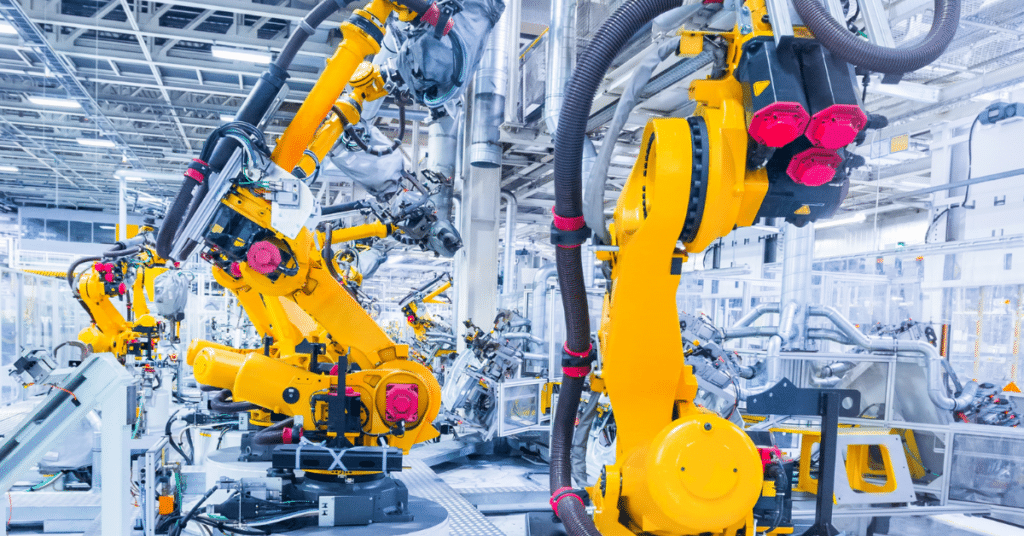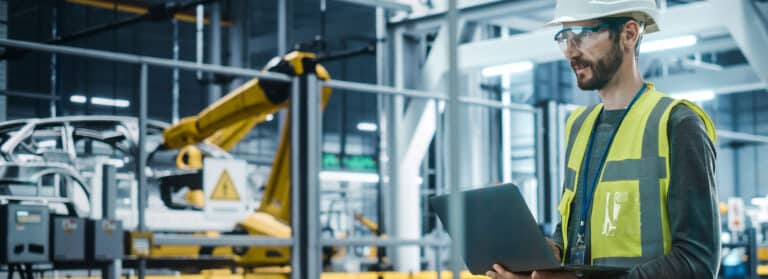Introduction
In the realm of modern industrial automation and robotics, efficiency, precision, and reliability are paramount. To achieve these goals, the seamless integration of Programmable Logic Controllers (PLCs) has become a standard practice. This blog explores the vital role that PLCs play in the world of robotics and automation, highlighting their versatility, applications, and the benefits they bring to the table.
Understanding PLCs
Programmable Logic Controllers (PLCs) are specialized digital computers designed for automating electromechanical processes in a wide range of applications. These rugged, industrially hardened devices are the backbone of automation, providing real-time control, data processing, and communication capabilities. PLCs are known for their reliability and versatility, making them a perfect match for robotics.
PLCs in Robotics
- Precision Control: Robotics often involves intricate movements and complex tasks. PLCs offer high-speed processing and precise control over various axes and actuators, ensuring that the robot carries out tasks with utmost accuracy.
- Safety Features: Safety is paramount in robotics, especially in collaborative settings. PLCs are equipped with safety functions such as emergency stops, interlock systems, and safety-rated communication protocols, ensuring the protection of both human operators and machinery.
- Communication: PLCs act as the central hub, facilitating communication between various components within a robotic system. They connect sensors, actuators, motors, and the Human-Machine Interface (HMI), enabling the robot to make real-time decisions and adapt to changing conditions.
- Flexibility: With the ability to program and reprogram tasks, PLCs make robotic systems highly adaptable. This allows manufacturers to quickly switch between different product lines or production processes without extensive reconfiguration.
PLCs in Automation
- Process Control: In manufacturing and industrial settings, PLCs are crucial for controlling and monitoring various processes. They regulate variables like temperature, pressure, flow, and position, ensuring products meet quality standards.
- Data Logging and Analysis: PLCs collect data from sensors and instruments, allowing operators to analyze and optimize processes. This data-driven decision-making contributes to increased efficiency and reduced downtime.
- Remote Monitoring and Control: PLCs can be integrated with networked systems, enabling remote monitoring and control. This is particularly valuable in scenarios where experts can provide assistance or adjustments from afar.
- Energy Efficiency: PLCs are adept at optimizing energy consumption in industrial settings. They can schedule machines to run during off-peak hours, adjust settings for energy-efficient operation, and shut down equipment when not in use.
Conclusion
The integration of PLCs in robotics and automation has revolutionized industries across the board. With their precise control, safety features, and adaptability, PLCs are indispensable in robotics, ensuring that robots perform tasks with precision and safety. Moreover, in automation, PLCs enable real-time control, data analysis, and energy efficiency, contributing to streamlined processes and increased productivity. The synergy between PLCs and robotics and automation is a perfect partnership that continues to drive innovation and efficiency in the industrial landscape.
To learn more about our open PLC Programmer positions visit PLC Programmer Jobs in Auburn Hills MI Manufacturing Job Recruiters (cpijobs.com)



